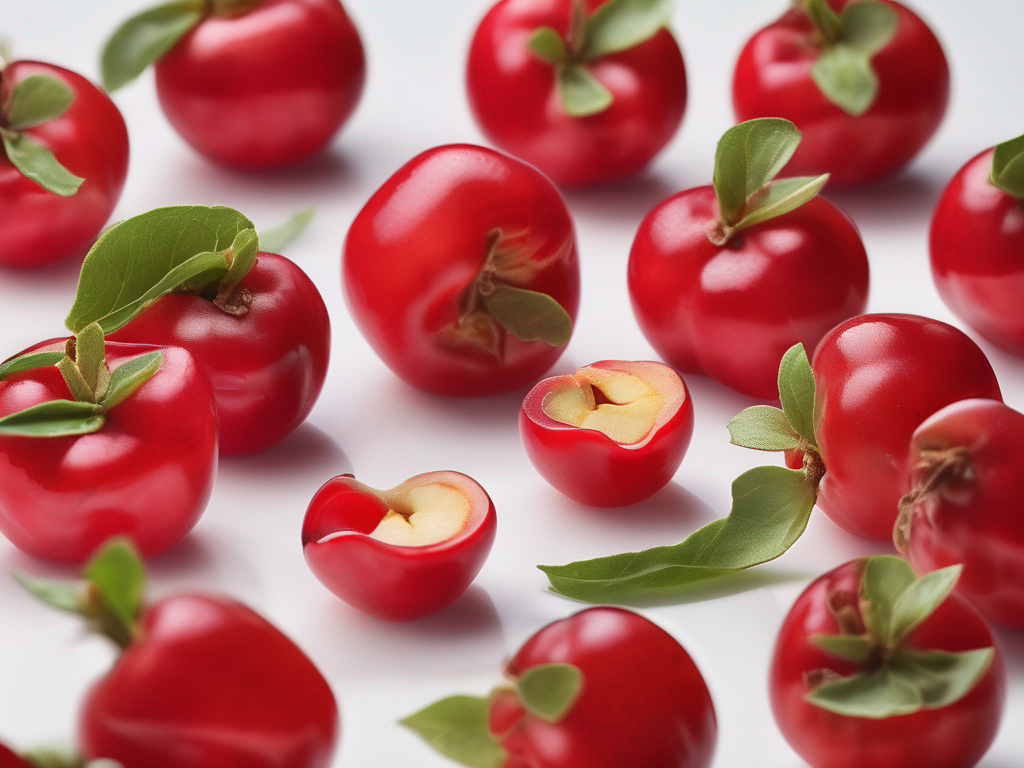
How to Tell if Acerola has Gone Bad
Get Your Free Food Safety Cheat Sheet
30 most common foods with instant answers. Print it and stick it on your fridge—completely free!
How to Tell if Acerola has Gone Bad
Acerola, also known as Barbados cherry, is a nutrient-dense fruit packed with vitamin C and antioxidants. Its tangy flavor and vibrant red color make it a popular ingredient in juices, smoothies, and desserts. However, like any perishable food item, acerola can spoil if not stored properly. In this blog post, we will discuss how to tell if acerola has gone bad and provide practical tips for ensuring the safety and freshness of this tropical fruit. (Acerola)
Signs of Spoiled Acerola
1. Mold or Discoloration
- Mold growth or dark spots on the surface of acerola indicate spoilage.
- Discoloration, especially a dull or brownish hue, can also be a sign that the fruit is no longer fresh.
2. Unpleasant Odor
- Spoiled acerola may emit a sour, musty, or fermented smell.
- If the fruit smells off or unpleasant, it is best to discard it.
3. Slimy Texture
- A slimy or mushy texture is a clear indication that acerola has started to spoil.
- Fresh acerola should have a firm and slightly juicy consistency.
4. Change in Taste
- Spoiled acerola may taste sour, bitter, or off.
- Fresh acerola should have a tangy and slightly sweet flavor.
5. Presence of Fruit Flies
- Fruit flies are attracted to overripe or spoiled fruit.
- If you notice an infestation of fruit flies around your acerola, it is likely past its prime.
Tips for Storing Acerola
1. Refrigeration
- Store fresh acerola in the refrigerator to prolong its shelf life.
- Place the fruit in a perforated plastic bag or airtight container to maintain freshness.
2. Freezing
- If you have an abundance of acerola, consider freezing it for long-term storage.
- Wash, dry, and remove the stems before freezing the fruit in a single layer on a baking sheet. Once frozen, transfer the acerola to a freezer-safe container or bag.
3. Avoid Moisture
- Excess moisture can cause acerola to spoil quickly.
- Ensure the fruit is dry before storing it in the refrigerator or freezer.
4. Use airtight containers
- Store cut or sliced acerola in airtight containers to prevent exposure to air and moisture.
- This will help maintain the fruit's freshness and flavor.
Safety Precautions
1. Wash Thoroughly
- Before consuming acerola, wash it under running water to remove dirt, bacteria, and pesticides.
- Use a produce brush to scrub the surface gently.
2. Check for Signs of Mold
- Before using acerola in recipes, inspect the fruit for any signs of mold or spoilage.
- Discard any pieces that appear to be rotten or contaminated.
3. Consume Promptly
- Fresh acerola has a relatively short shelf life.
- Consume the fruit promptly to enjoy its maximum nutritional benefits.
4. Avoid Cross-Contamination
- When handling acerola, ensure that your hands, utensils, and cutting boards are clean and sanitized.
- Prevent cross-contamination with other foods to minimize the risk of foodborne illness.
Conclusion
By following these tips for storing and identifying spoiled acerola, you can enjoy this nutritious fruit at its best. Remember to inspect the fruit for mold, off odors, slimy texture, or changes in taste before consuming it. Proper storage and handling practices will help maintain the freshness and quality of acerola, allowing you to savor its unique flavor and health benefits. If you have any doubts about the safety of acerola, it is best to err on the side of caution and discard the fruit. Stay informed and proactive when it comes to food safety to ensure a healthy and enjoyable culinary experience.
For more information on acerola, visit our main food page. (Acerola)

Authoritative Food Safety References
These agencies and university labs inform every tip and health precaution we publish.
USDA FoodKeeper – Cold Storage Guidelines
Official refrigerator, freezer, and pantry timelines maintained by the U.S. Department of Agriculture.
Visit USDA FoodKeeperFDA Produce Safety Rule & Grower Guidance
Field-to-fridge handling practices that prevent contamination of fruits, vegetables, and leafy greens.
Visit FDA Produce SafetyCDC Foodborne Illness Prevention Hub
Surveillance-backed guidance on pathogens, symptoms, and steps to reduce foodborne illness risk.
Visit CDC Food SafetyUC Davis Postharvest Technology Center
University research detailing optimal storage atmospheres for produce after harvest.
Visit UC Davis PostharvestPenn State Extension – Home Food Preservation & Safety
Peer-reviewed extension bulletins on safe canning, chilling, and reheating practices.
Visit Penn State ExtensionHow can I tell if my acerola has gone bad?
Can I still consume acerola if it has turned slightly brown?
How should I store acerola to prolong its shelf life?
Can I freeze acerola to extend its freshness?
Are there any food safety concerns associated with consuming spoiled acerola?
Get Your Free Food Safety Cheat Sheet
30 most common foods with instant answers. Print it and stick it on your fridge—completely free! Want more? Upgrade to the complete guide with 70+ foods.
Scan your food directly and get instant safety info using our AI-powered camera feature.